Google Analytics is an invaluable tool for businesses seeking to grow online. Whether you’re a small business owner, digital marketer, or entrepreneur, understanding and interpreting key metrics can provide the insights needed to enhance your website’s performance. But with so much data available, where do you start? This guide will walk you through five essential Google Analytics metrics and how to effectively use them to make informed decisions.
What Are Google Analytics Metrics, and Why Do They Matter?
Google Analytics metrics are specific data points that give you insights into how visitors interact with your website. These metrics can help you identify what’s working, what needs improvement, and how to align your efforts with business goals. By focusing on the right metrics, you’ll uncover actionable insights to drive growth.
Now, let’s break down five key metrics that every website owner or marketer should know.
Defining Key Metrics in Google Analytics
1. Sessions
- What it is: The total number of visits to your website. A session begins when a user lands on your site and ends after 30 minutes of inactivity or when the session clock resets at midnight.
- Why it matters: Sessions give you an overview of how many times your website is being accessed, helping you understand overall traffic trends.
2. Bounce Rate
- What it is: The percentage of visitors who leave your site after only viewing one page.
- Why it matters: A high bounce rate indicates users may not be finding what they’re looking for, or your site isn’t engaging enough to encourage further exploration.
3. Conversion Rate
- What it is: The percentage of visitors who complete a predefined goal on your website, such as signing up for a newsletter, making a purchase, or submitting a form.
- Why it matters: This metric directly measures the effectiveness of your site in driving desired actions.
4. Pageviews
- What it is: The total number of pages viewed by all users during a given period.
- Why it matters: Pageviews indicate interest levels across your site’s content and show which pages attract the most attention.
5. Average Session Duration
- What it is: The average amount of time users spend on your site during a session.
- Why it matters: This metric helps evaluate how engaging your website is. A higher duration suggests users are finding your content valuable and compelling.
How to Interpret Each Metric
Sessions
If your sessions are increasing over time, it’s a good sign that your marketing efforts are bringing in more visitors. However, consider the quality of these visitors—high sessions with a low conversion rate might indicate untargeted traffic.
Bounce Rate
A lower bounce rate is often a positive indicator, showing that visitors are exploring beyond the landing page. However, in cases where single-page content is the goal (e.g., blogs or landing pages), a high bounce rate isn’t necessarily bad.
Conversion Rate
A low conversion rate indicates that users are not taking desired actions. It could point to unclear calls-to-action (CTAs), poor user experience, or a mismatch between visitor expectations and your website’s offering.
Pageviews
Higher pageviews typically show good engagement, but consider them in conjunction with other metrics. For example, if pageviews are high but average session duration is low, users might not be fully engaging with your content.
Average Session Duration
Short session durations might mean users aren’t finding value in your content. Investigate which pages have the shortest durations and assess whether the page speed, design, or content quality could be improved.
Tips to Improve Key Metrics
If your metrics aren’t living up to expectations, don’t panic—there are actionable strategies to turn them around.
Boost Sessions
- Invest in SEO to rank higher for relevant keywords.
- Run targeted ad campaigns to attract your ideal audience.
- Share content consistently on social media to drive traffic.
Lower Bounce Rate
- Optimize landing pages with clear headlines and CTAs.
- Improve site speed to ensure users stay engaged.
- Use engaging visuals and video content to retain visitor attention.
Increase Conversion Rate
- Simplify your website navigation and ensure CTAs stand out.
- Use A/B testing to identify what drives conversions.
- Offer value-based incentives, such as free guides or discounts.
Enhance Pageviews
- Encourage internal linking to guide users through your site.
- Create content that covers topics in depth to keep users reading.
- Utilize “related content” recommendations for blog posts or articles.
Improve Average Session Duration
- Produce high-quality, informative content that adds value to your audience.
- Include interactive elements like videos, quizzes, and downloadable resources.
- Reduce pop-ups and distractions that may interrupt the user experience.
Real-World Examples of Using Metrics for Decision-Making
To make these metrics more relatable, here are some practical examples:
Example 1: Optimizing Landing Pages
A small e-commerce store noticed a high bounce rate on their landing pages. By simplifying the headlines, improving load speed, and adding customer reviews above the fold, they reduced their bounce rate by 25%, leading to more purchases.
Example 2: Increasing Conversions
A digital marketer for a nonprofit noticed their conversion rate was stagnant. After conducting A/B testing on CTAs and simplifying their donation page, conversions increased by 15% in just one month.
Example 3: Engaging Content Strategy
A business blogger saw that certain posts had higher pageviews and session durations. They started creating more content around similar topics and introduced internal links, which boosted their traffic by 40%.
Final Thoughts
Understanding and interpreting key metrics in Google Analytics is essential for optimizing your website’s performance. By tracking sessions, bounce rate, conversion rate, pageviews, and average session duration, you can gain valuable insight into your audience’s behavior and make data-driven decisions.
Remember, consistent monitoring is key—using these metrics to adjust your strategies ensures you stay aligned with your goals.
We Want To Talk To You About Your Marketing Goals.
Let’s Supercharge Your Online Growth!












